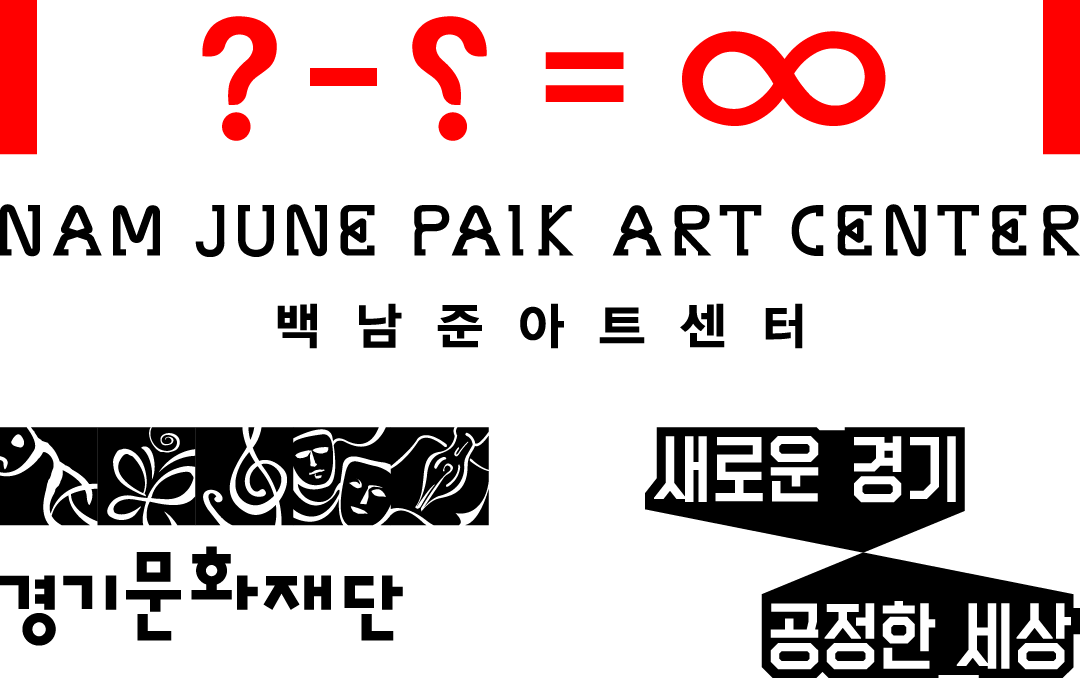
Rehabilitation of Genghis Khan
Rehabilitation of Genghis Khan was exhibited at the Venice Biennale 1993, which materialized the concept of a new Silk Road that connects the East and West that had been substituted with a broadband electronic highway. This Genghis Khan of the 20th century is riding a bike instead of a horse, wearing a diving helmet. His body is made of a steel fuel dispenser, and his arms are made with plastic pipes. The back of his bike is loaded with television cases, filled with symbols and characters created by neon lights. The neon symbols suggest a possibility of condensed delivery of complicated information through an electronic highway. The video displayed on the screens presents a series of images that change, from a bottle to a pyramid, from a ceramic bowl to a kettle, while abstract geometrical patterns alternate. Through his robot sculptures such as Marco Polo, Rehabilitation of Genghis Khan, Alexander the Great, and Tangun as a Scythian King, Nam June Paik emphasizes the future with a new paradigm that is realized with software development through broadband communication, stepping forward from the old age when power and domination were achieved through transportation and movement.
Artist
Nam June Paik
Date
1993
Classifications
robot, video
Dimensions
217×110×211cm
Medium
1 CRT TV set, 10 steel CRT TV cases, neon tube, bicycle, diving helmet, fuel dispenser, plastic pipes, cape, ropes, 1-channel video, color, silent, LD
Collection No
230


